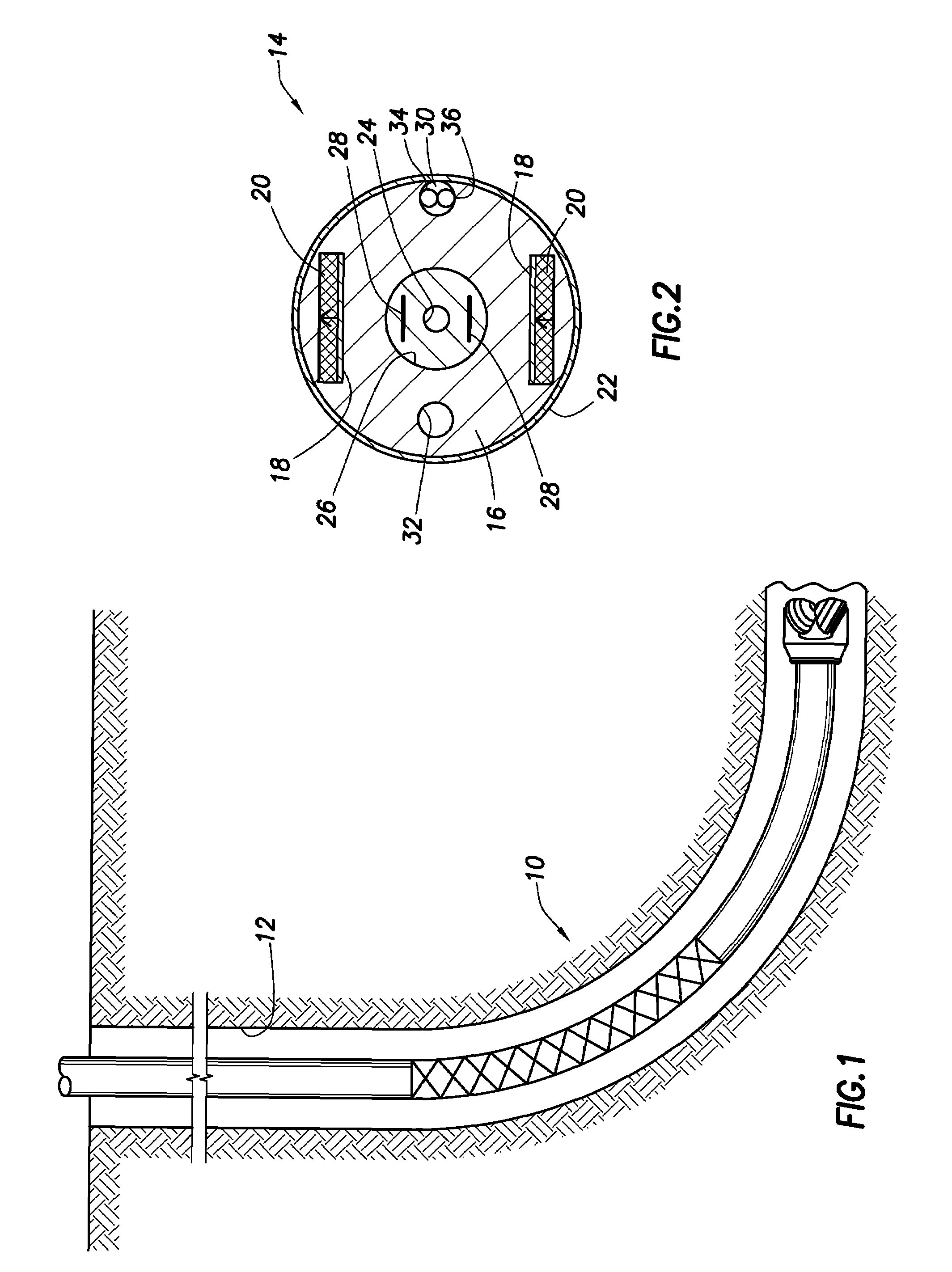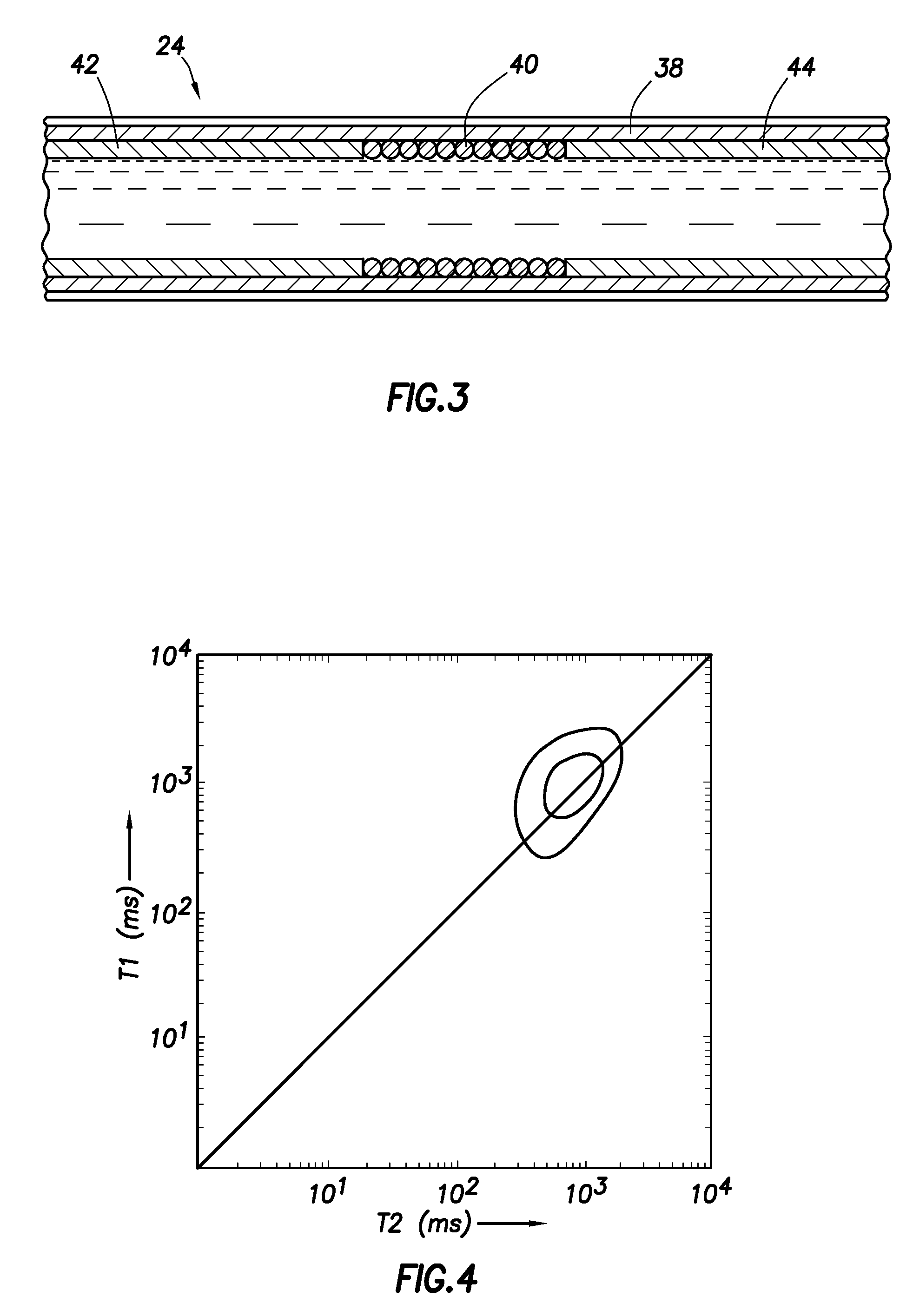High pressure/high temperature magnetic resonance tool
a high-temperature magnetic resonance and tool technology, applied in the direction of instruments, using reradiation, measurements using electron paramagnetic resonance, etc., can solve the problems of low fill factor, inability to use pressure cells in downhole fluid sampling tools, and inability to achieve high-temperature magnetic resonance. , to achieve the effect of improving the accuracy of the tool, increasing the complexity, cost and maintenance of the tool
- Summary
- Abstract
- Description
- Claims
- Application Information
AI Technical Summary
Benefits of technology
Problems solved by technology
Method used
Image
Examples
Embodiment Construction
[0017]FIG. 1 shows a magnetic resonance tool 10 disposed in a wellbore 12. The tool could be a nuclear magnetic resonance tool or an electron spin resonance tool. Also, although the particular embodiment shown is in a wellbore, the invention is not limited to downhole applications and may be used in a laboratory. While one embodiment of this invention provides for a NMR instrumented flowline section that can be used in a logging tool, the same apparatus can also be used as a high pressure cell for conducting laboratory NMR measurements on reservoir or process fluids. “Process fluids” are any of the intermediate or final fluids resulting from performing a process. The invention may be used in wireline logging or while-drilling.
[0018]FIG. 2 discloses a NMR module having a magnet assembly 14 that can be used to perform NMR spin echo measurements to determine, for example, relaxation time and diffusion coefficient distributions of reservoir fluids. The fluids of interest may be in a lab...
PUM
 Login to View More
Login to View More Abstract
Description
Claims
Application Information
 Login to View More
Login to View More - R&D
- Intellectual Property
- Life Sciences
- Materials
- Tech Scout
- Unparalleled Data Quality
- Higher Quality Content
- 60% Fewer Hallucinations
Browse by: Latest US Patents, China's latest patents, Technical Efficacy Thesaurus, Application Domain, Technology Topic, Popular Technical Reports.
© 2025 PatSnap. All rights reserved.Legal|Privacy policy|Modern Slavery Act Transparency Statement|Sitemap|About US| Contact US: help@patsnap.com



